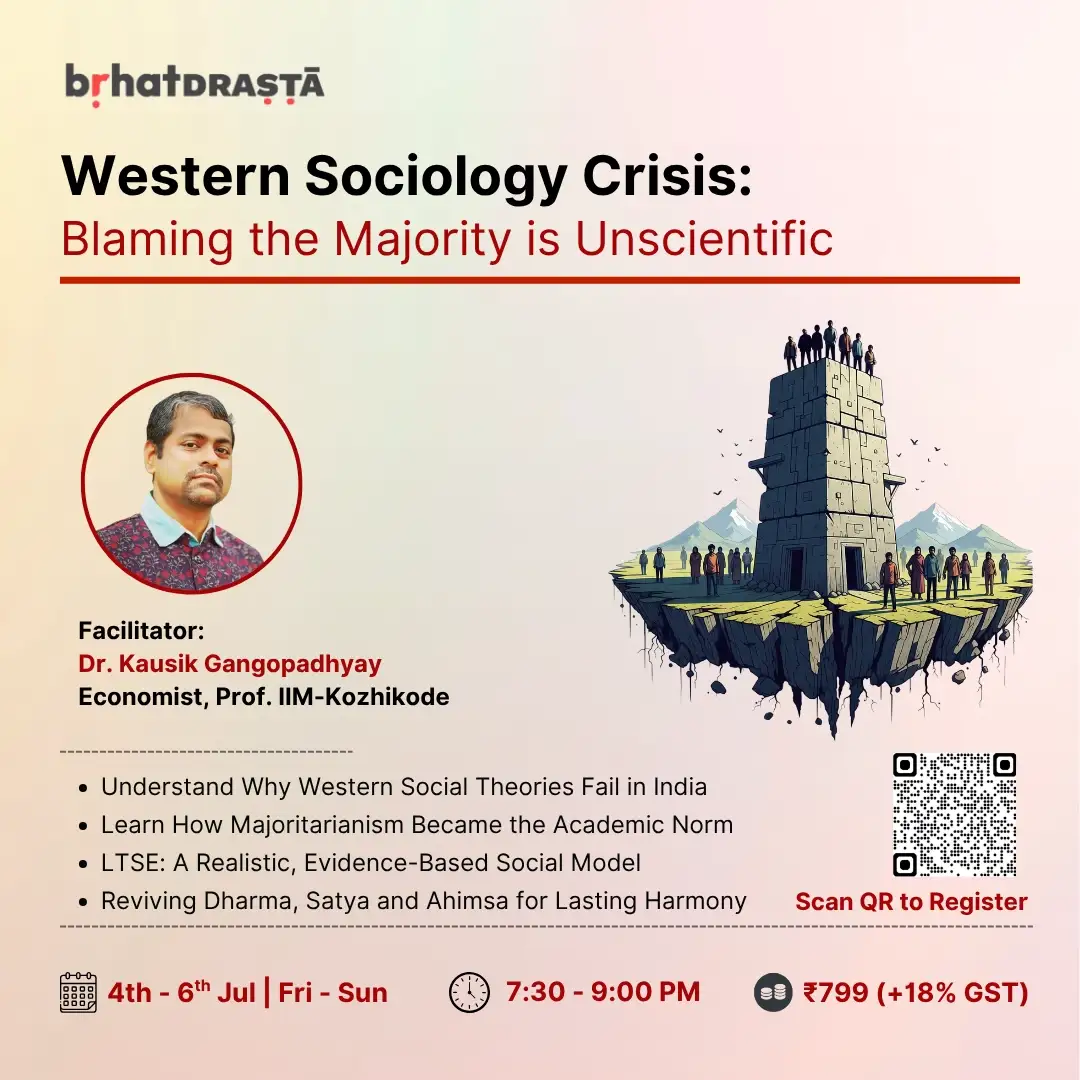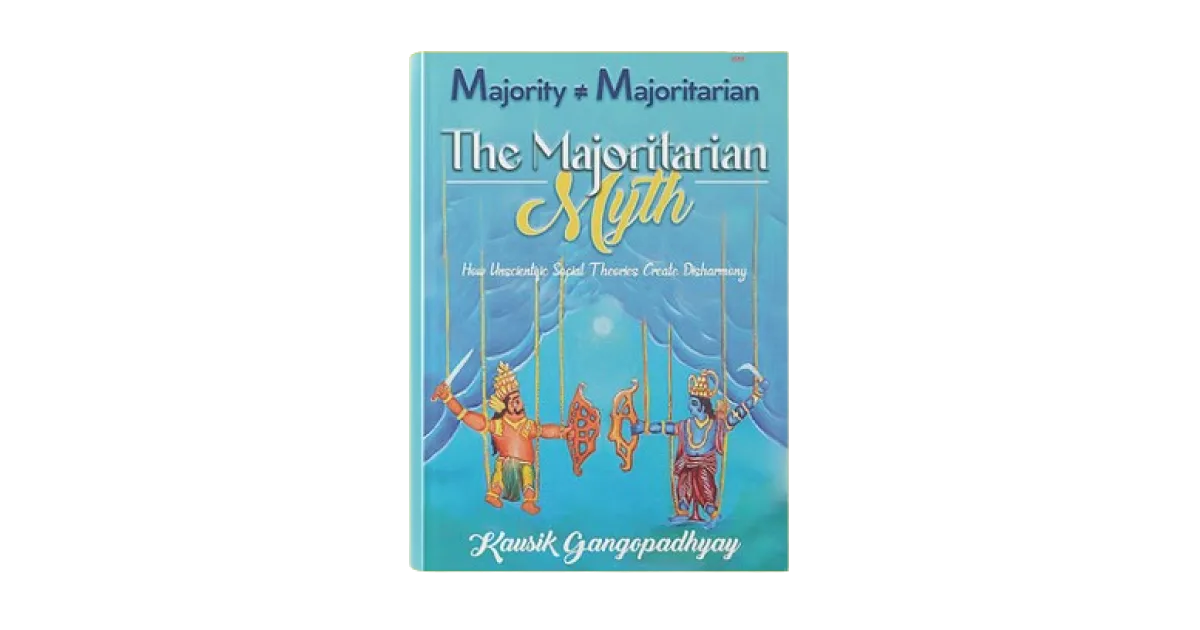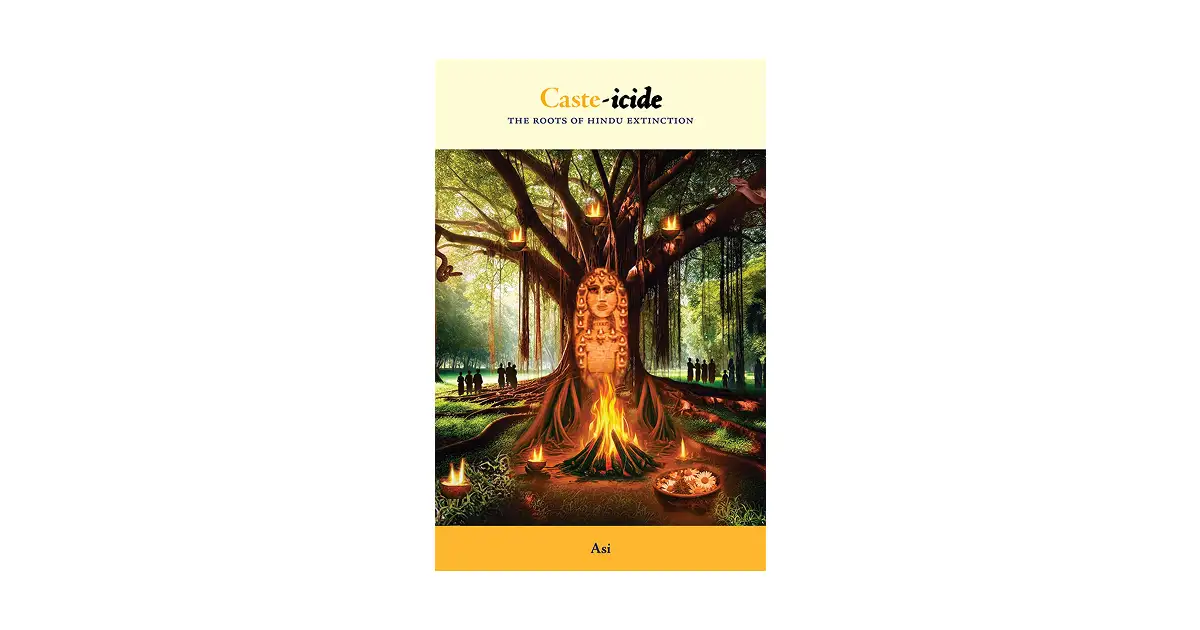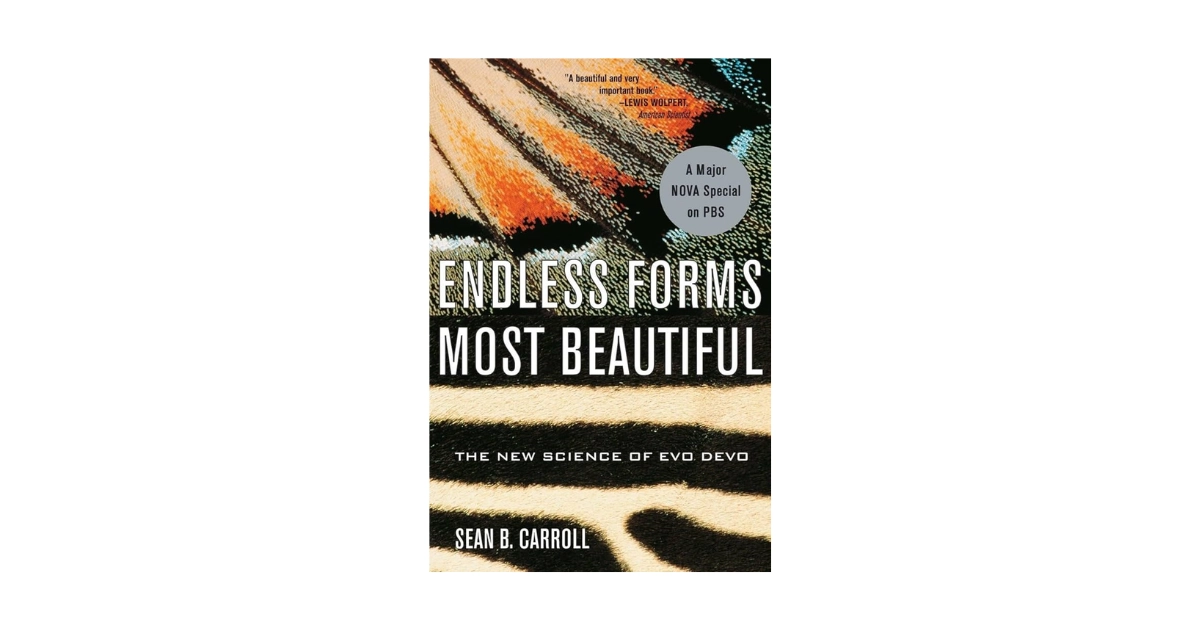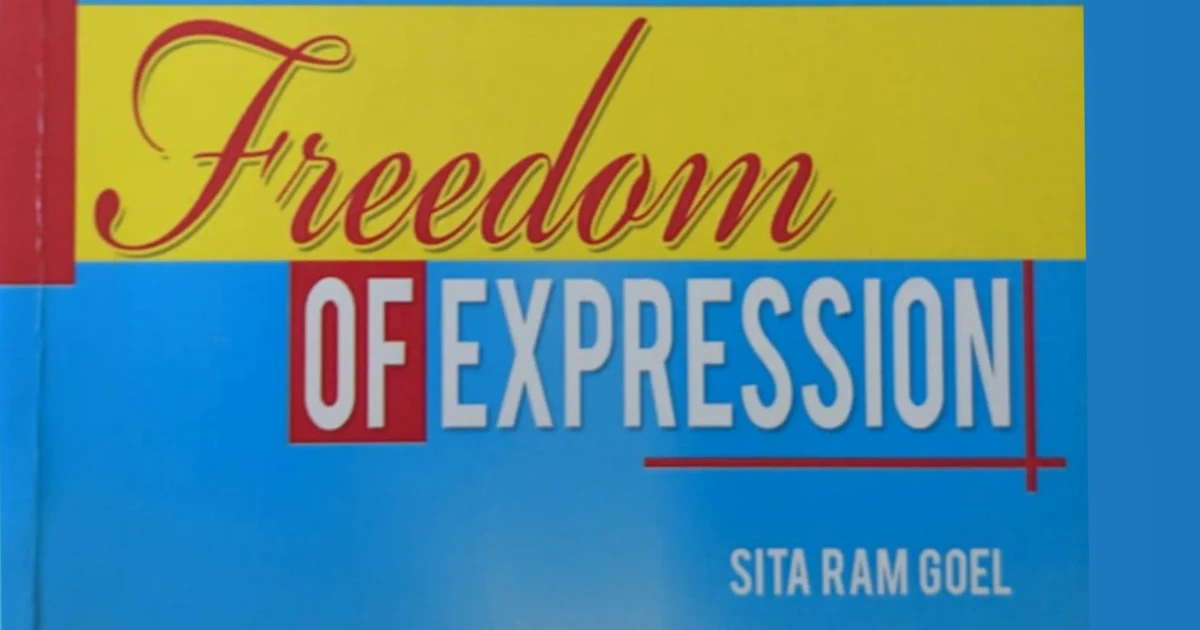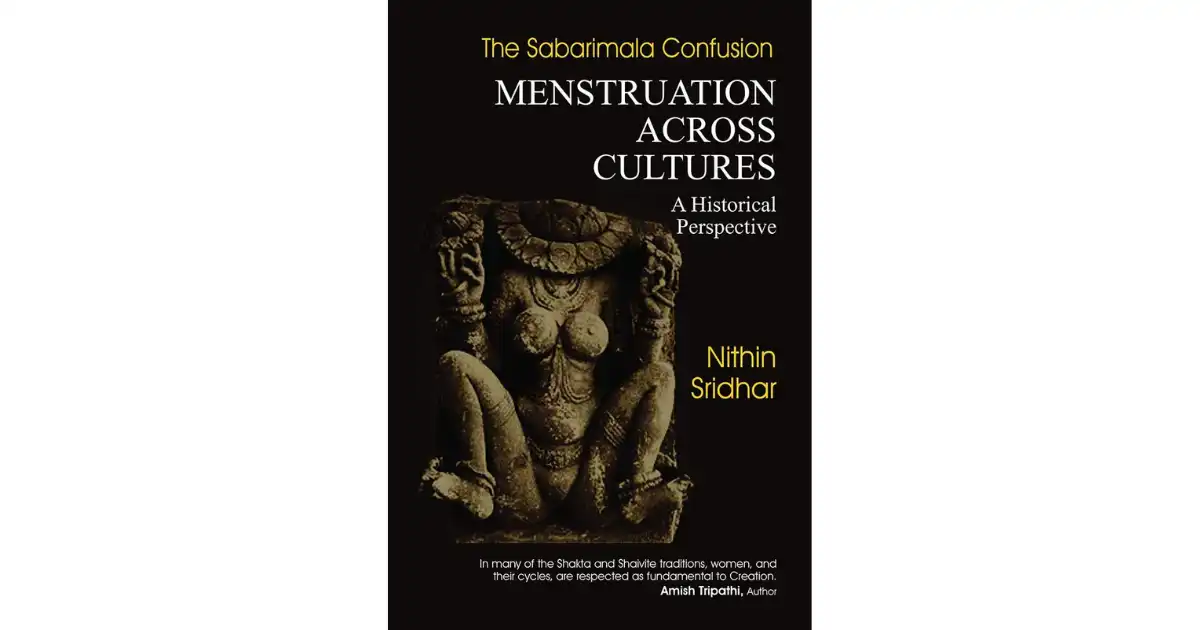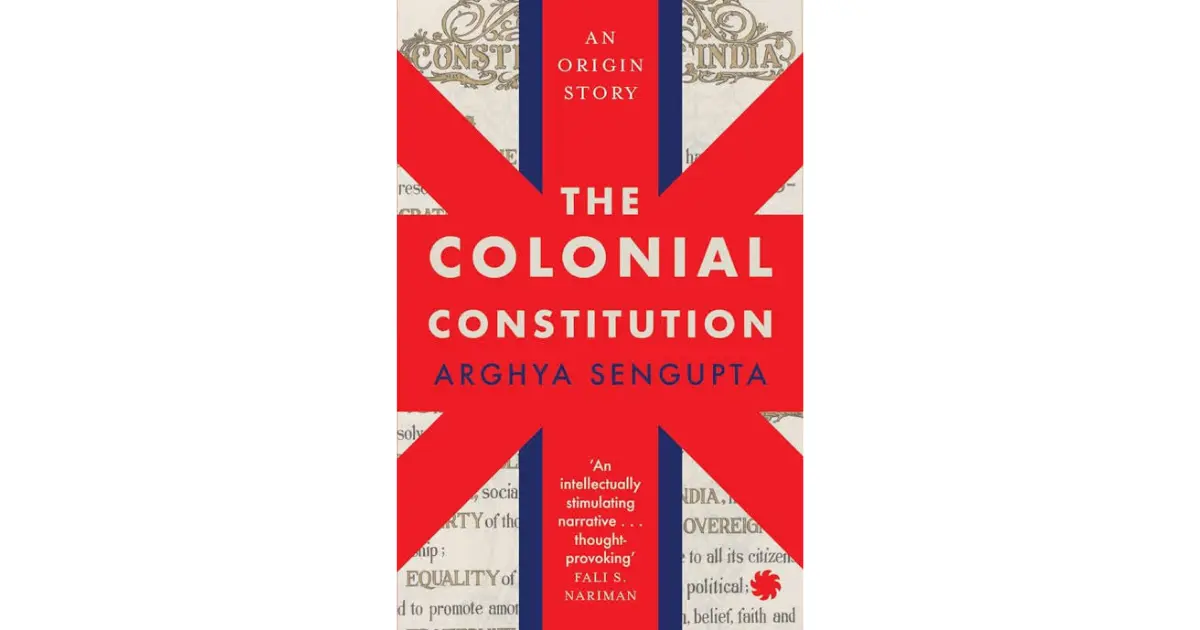In Part 1 of this review, we got a glimpse into a few topics including:
- The Four Feats
- Majoritarianism and Linear Theory of Social Evolution (LTSE)
- What Goes Into Myth
- Majority and Minority in Constitutions Across the World
- Politics of Bhārata regarding the Majoritarian Myth
Here in Part 2, we will look at the origins of the myth of majoritarianism including the etymology and evolution of the word “majority”, the thread of thinkers through recent European history who shaped our understanding of populations and majority groups; and how more recently, the growth of liberalism led to the perception of the majority group as the oppressors, always. We’ll also look at LTSE and social intolerance in more detail, leading up to the scientific examination of evidence.
These are all topics more deeply elaborated in the book, which can be purchased here:
The Origins of the Myth
The definition given by the Merriam Webster dictionary defines majoritarian as “the philosophy or practice according to which decisions of an organized group should by made by a numerical majority of its members.”
It is also defined as “rule by majority, especially the belief that those constituting a simple majority should make the rules for all members of a group, nation, etc.” In effective understanding, majoritarian means a belief that the majority in the community should be able to rule a country in whichever way it wants, to the detriment of the minority. Section II, The Majoritarian Myth
Some ideas expressed in the above definitions can be easily related to the concept of democracy - indeed, elected officials in seats of power are supposed to be installed there by majority vote. Though ancient in conception, the real rise of democracy in the West was a fairly recent one, which traces back to the 1700s in France, England, and the American colonies. Nevertheless, even in these contexts, importance and value was given to experiential understanding as well as majority understanding. All three societies conceived lower houses of elected officials, to be determined by majority vote and/or the masses, along with an upper house which was to be appointed in a separate way, to those candidates with prior experience in the domain. For there was clarity in the fact that any or all decisions may not be right, just because the majority of the population felt so. As Dr. Gangopadhyay succinctly states:
...In a world based on experiential understanding,only people with experience on any particular matter can ever be right about that particular matter. And, often these people are in the minority among the vast population.
Alexis de Tocqueville, a French diplomat from the 1800s, warned against a “Tyranny of the Majority”, based on his experience of touring the American colonies of that time. His account demonstrates the valid concern - valid even today - that a system which has no role for experience-based, elderly vision may not be a sustainable one. This concern echoes multiple aspects we see in Bhārata today. The traditional, age-old system revered and took guidance from saṇnyāsins and sages in society, though they were definitely not the majority of the population. Today, the dangers of demographic inversion also highlight this “Tyranny of the Majority”. In places like Kashmir, West Bengal, Kerala, even UP and other states - where a majority of the population may be of a new, relatively alien tradition with its own set of laws - should not the Tyranny of the Majority be guarded against?
John Stuart Mill, an English philosopher and contemporary of de Tocqueville, had a slightly different concern: he advocated for the tiniest minority, who may not have anyone on his or her side. Mill’s philosophy, utilitarianism, is much more well-known than Toqcueville’s -
In sum, it is not about the majority in the sense of an identity, but that idea that the dictums wished by the majority may not go well with the basic understanding of individuality.
Still, at that time the word majoritarianism was rarely used, and when so, it was more in the legal context to secure the individual against tyranny of the majority. In time, over the 19th to 21st centuries, it was with the growth of liberalism that the word came to be used frequently, and that, too, in a derogatory way. It was with the growth of cultural marxism, and the rise of antagonism to anything traditional or relating to ancient custom and tradition, that the majoritarian myth spread like wild fire. Here, it is critical to examine how this has played out in Bhārata. The history of the “guilty” majority in India, as per global perception, is a case study which is evaluated in detail in the book.
Linear Theory of Social Evolution (LTSE) and Social Intolerance
If we extend unlimited tolerance even to those who are intolerant, if we are not prepared to defend a tolerant society against the onslaught of the intolerance, then the tolerant will be destroyed, and tolerance with them. Karl Popper
According to theories of liberalism, all cultures are equal. However, the fault in this logic lies in the fact that not all cultures are symmetrical. Some clearly advocate for tolerance, while others stand for starch intolerance against specific behaviors and even legal allowances. Here, Dr. Gangopadhyay analyzes the relation between religion, religionists, and LTSE. Echoing the word or Śrī Sita Ram Goel and Śrī Ram Swarup before him, he points out - with different terminology - that an LTSE creates a categorization of human beings: those who believe in, and those who do not. With this lens, we can view the world today. Political Christianity as colonialism is only the next step in this train of thought, aptly outlined with clear examples from history. Dr. Gangopadhyay goes on to tie the concept of Nationalism into this mix, looking at how Western and non-Western nations compare in this sense, too.
Finally, he comes to Political Islam. The elephant in the room. Even the creation of the nation of Pakistan was an act motivated by an LTSE, for the idea of two nations - one for the Muslims and one for the non-Muslims - was a theme of political Islam which even Marx had pointed out. Muslim scholars and preachers in the Deobandi school made the general populace believe that the Muslim minority community in India needed a separate nation for its people, who may otherwise be overrun by the Hindu majority. Advocate and author J. Sai Deepak goes into this history in detail in his second book, India, Bharat, and Pakistan.
In the last couple sections in his book, Dr. Gangopadhyay lays out two important topics:
- The Scientific Examination of Evidence, and
- Satya and Ahimsa for Social Harmony
These two sections look at how global reports, data analyses, and population proportional data lead to erroneous conclusions, thereby ruining chances for social harmony. In fact, global media reports are rife with faults in logic, leading to multiple paradoxes and curious cases that illustrate gaps between reality and what we see on paper. Multiple strawman arguments are debunked here, and the underlying agendas of academia exposed - specifically the American Academia. The Social Sciences’ shallow understanding of human nature is explored, and finally the Indic civilizational understanding of social harmony is taken up.
The book is an eye-opening work for any intellectually curious reader; though it may be of particular importance to those (dare I say young?) minds who have lived through the conflicts created by Woke ideology in the outside world and traditional, Bhāratīya childhoods at home.
Those interested in learning more, and that too directly from Dr. Gangopadhyay himself, may sign up for our upcoming online, 3-day Draṣṭā workshop: The Western Sociology Crisis. The workshop plans to critically re-examine the widely accepted idea of ‘majoritarianism’ as it is understood in the social sciences. The concept of a majoritarian Hindu fails to explain any of the empirical reality of the social phenomenon in India. With historical analysis this workshop will also cite that the road to social harmony cannot lie with cultural Marxism and its progenitor liberalism. This then possesses some key questions: Is the majority inherently culpable in social discord? Can equity be truly achieved by ignoring foundational truths? Drawing from Indic ideas like the Mahābhārata, sustainable social harmony requires going beyond theory - into lived dharma. Rather than defaulting to reactive blame or imported ideological templates like Diversity, Equity, and Inclusivity, this workshop proposes an authentic, self-reflexive Indic approach to cultivating coherence in society.
